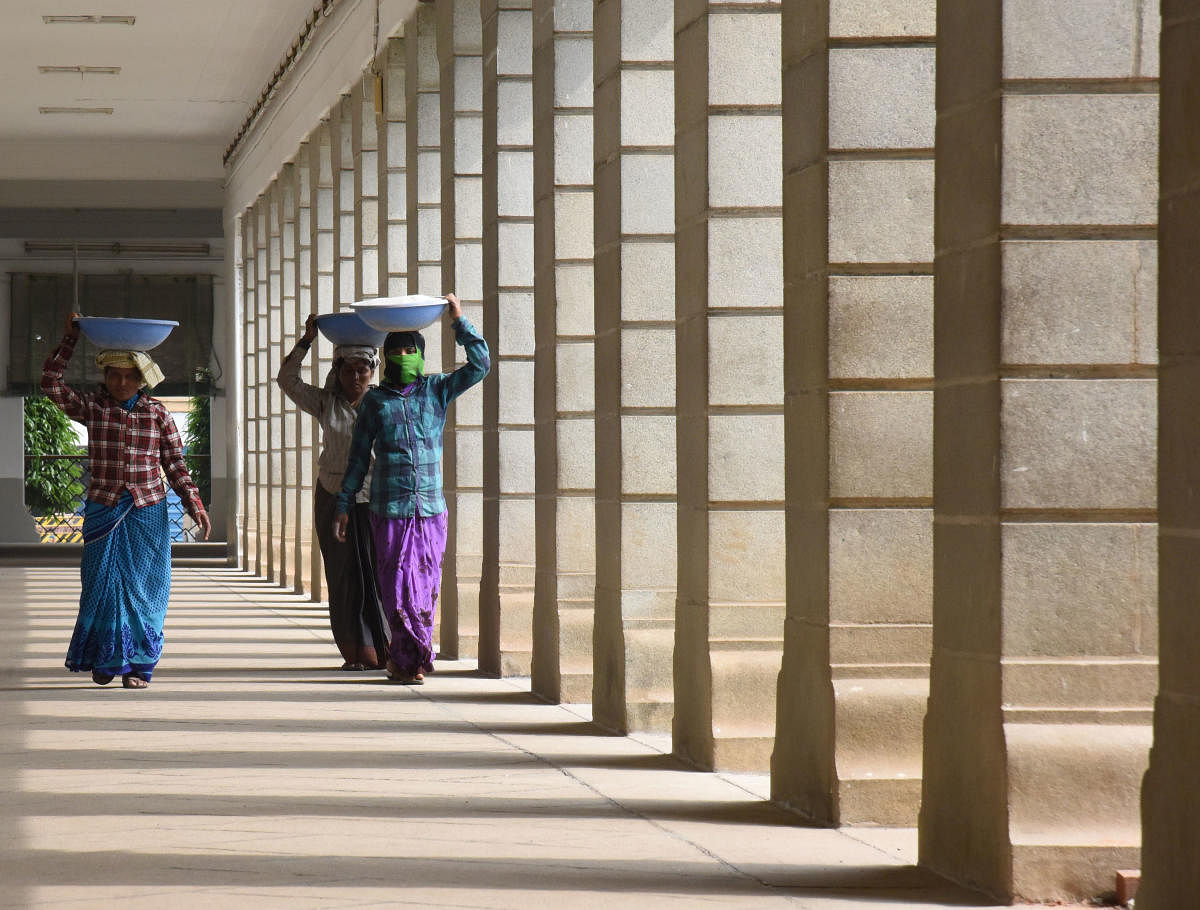
The ‘Global Wage Report 2018-19: What lies behind gender pay gaps’, published by the International Labour Organisation (ILO), explores the global trends in wages. The report has carried out a detailed analysis of the gender wage gap and its implications for equality and social justice. It seeks to evolve an informed debate on gender wage imbalance “as a form of unacceptable inequality in the world of work”. This focus is part of the commitment to the Sustainable Development Goals. The SDG target 8.5 aims to achieve “equal pay for work of equal value” by 2030. One of the important findings is that the (weighted) global gender pay gap stands at around 16%. In terms of median monthly wages, it is 22%.
Globally, the real wage growth rates declined to 1.8% in 2017 and are at the lowest since the 2008 global financial crisis. In the G20 countries, real wage growth has declined to 0.4%. Eastern Europe has recorded a gradual increase of wage growth from 2.8% in 2016 to 5% in 2017. In the US, it declined from 2.2% (2015) to 0.7% in 2016 and 2017.
The report finds that among all the regions, workers in Asia and the Pacific have enjoyed the highest real wage growth since 2006. The decline of wage growth was also seen in Central and Western Asia, from 3% in 2016 to 0.5% in 2017. In Latin America and the Caribbean, real wage growth in 2017 has slightly increased and in Africa, real wages appear to have declined overall in 2017 by 3%.
In short, real wage growth has increased in the emerging and developing G20 nations whereas the advanced G20 countries recorded a much lower total of 9%. In the low and middle-income countries, the average wages remain low and are inadequate to meet the financial requirements of workers and their families.
The report specifically emphasised the increase of real wage growth in the Asian region, particularly South Asia, including India. It pointed out that the average real wages show significant positive growth in the emerging G20 nations, except in Mexico. However, the cause of concern is wage inequality and gender pay gap. The Gini estimates of wage inequality in high income countries is 26.1 and 40.5, 37.1 and 47.3 in upper-middle income, lower-middle and low-income nations against the global average of 35.5.
India stood highest among South Asian countries, with a 5.5% increase in average wage growth during 2008-17. As per the National Sample Survey Organisation (NSSO), the percentage share of females in wage employment in the non-agricultural sector during 2011-12 increased to 19.3%, which is higher than the 18.6% reported during 2009-10. The mean gender pay gap in India is highest at 34.5% in terms of hourly wages.
The sectoral data corroborates the persistence of gender pay gap as reported in the ‘State of Working India, 2018’ by the Centre for Sustainable Employment. As per Mondal, et al (2018), females were paid 60-70% of the wage paid to males across most agricultural occupations. However, the real wage growth rate is faster among women than men. It is observed that the gender wage gap in the organised manufacturing sector is high — at 40% in 2014. Though this is a decrease from 46% in 2013, the gap is still high.
The Global Wage Report analysed the wage inequality from a gender perspective with a focus on providing an explanation to the “unexplained” part of the gender pay gap. For this purpose, it has taken into consideration “motherhood” and undervaluing of women’s work as prime factors, along with educational, occupational, social, familial and labour market characteristics.
Wage Equity Act
The high gender wage gap in India may be attributed to a number of factors, in particular, societal perception, wage structures and labour laws. The existing wage policy framework does not show gender sensitivity towards women. To illustrate, even the recent “Report of the Expert Committee on Determining the Methodology for Fixing the National Minimum Wage, 2019” has not emphasised on gender wage equality in its recommendations.
The Equal Remuneration Act, 1973, which provides for payment of equal remuneration to men and women workers for the same work needs effective implementation in public and private sectors. The issues of implementation on the basis of gender discrimination in informal sectors demands stringent institutional checks and balances to mitigate the same. Due to familial responsibilities and financial dependency, women working in the informal sectors are prone to multiple vulnerabilities and many are not reporting the discrimination at their workplaces.
The gender wage inequality can be explained in two ways: (i) the difference in terms of educational attainment, experience and skills; and (ii), the remaining gap could not be explained by the observable indicators and may be attributed purely to gender discrimination. This “unexplained” part of the wage gap is critical as highlighted by the Global Wage Report. This has to do with the social attitudes and gender perceptions of the society towards working women, notwithstanding the role of laws, institutions and policies that determine and dictate the scale of wages. The unequal land rights, male hegemonic property regime and insufficient capital investment worsen the gender wage gap.
The undervaluing of women’s household work and non-accounting of the same to the GDP negates their economic rights. The economic underpay discourages female participation in the labour market despite faster real wage growth rate among women in the casual and organised sectors. The government’s labour reforms must take into cognisance the gender wage inequality to bring in the national wage equity act aiming equal wage for equal work to usher in wage equality.
(The writer is a PhD Fellow, Centre for Political Institutions, Governance and Development, Institute for Social and Economic Change, Bengaluru)